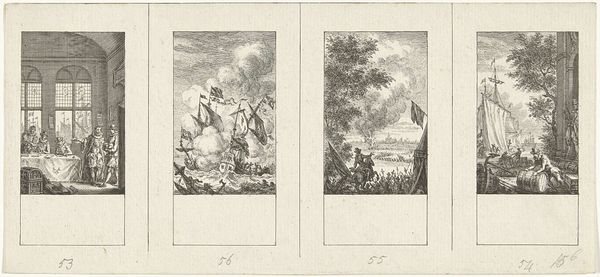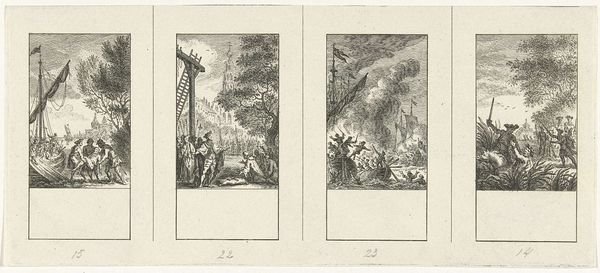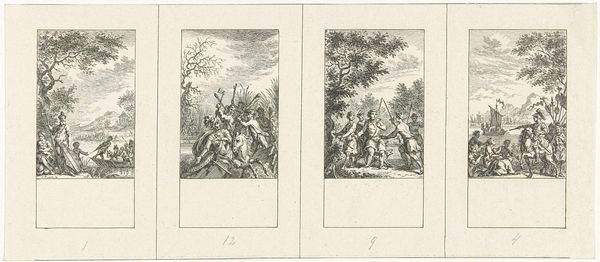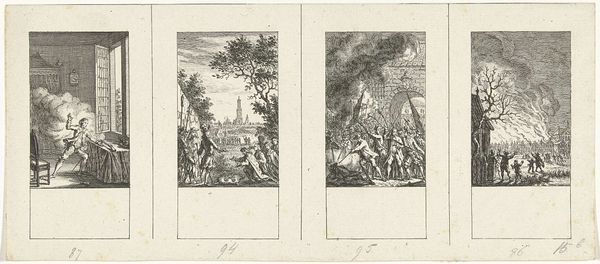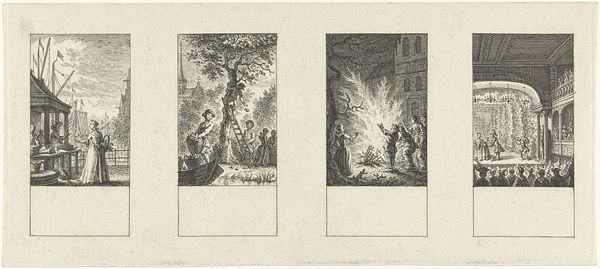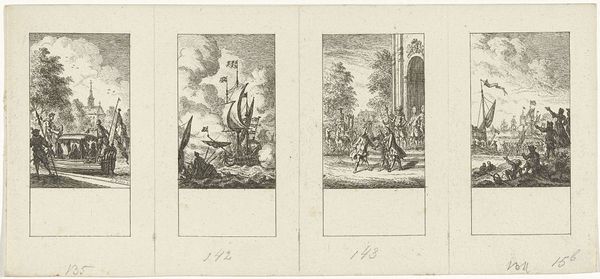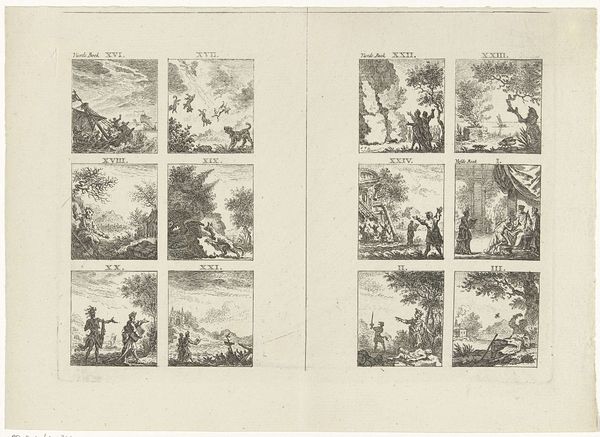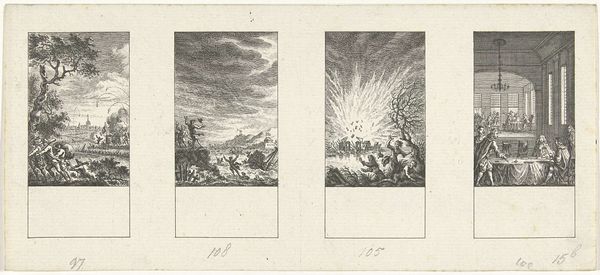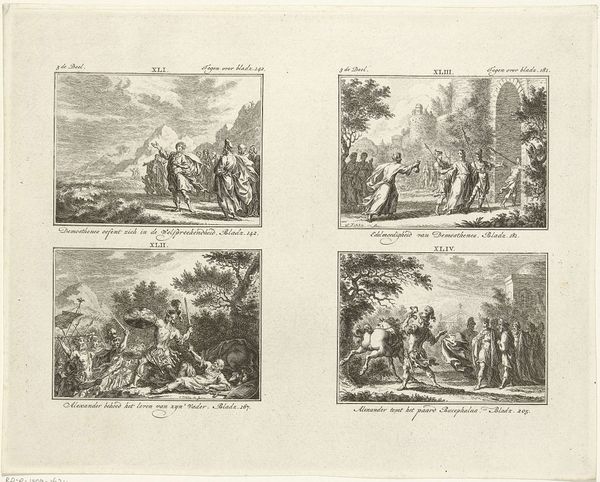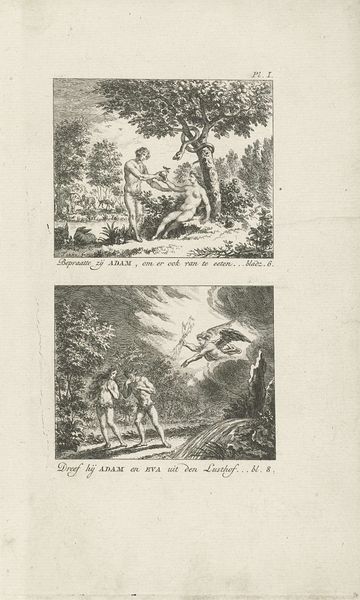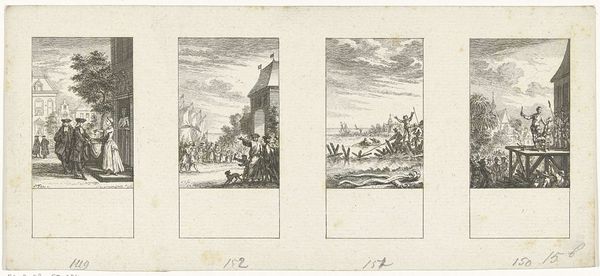
print, etching
#
baroque
# print
#
etching
#
landscape
#
etching
#
figuration
#
genre-painting
Dimensions: height 108 mm, width 256 mm
Copyright: Rijks Museum: Open Domain
Curator: Today, we're looking at Simon Fokke’s “Vier voorstellingen van de vier dagdelen,” created between 1722 and 1784. These are four scenes rendered through etching, each portraying a different time of day. Editor: My immediate reaction is how quaint they feel! There's a gentle nostalgia embedded in these small, busy scenes; they all seem very active despite the print’s limited gray scale. The artist achieves such delicate detail. Curator: Yes, the composition of each section is thoughtfully structured. Fokke masterfully uses the tree motif, organizing his scenes and adding depth, with remarkable hatching and cross-hatching for tonal variation. He employs this element in all the scenes. It provides stability but the light subtly informs you on where to gaze. Editor: Right, because each scene offers unique cultural symbols for each time of day! In the first panel, dawn includes a woman tending a fire while at dusk there's a couple under the soft glow of a lantern—these motifs evoke communal comfort as day transitions into night, or the necessity to carry on. Curator: Indeed, note the contrasting rendering of light within these day-to-night scenes. He plays between the active rendering and the quiet contrast by the lamp. This illustrates how one artist might represent one universal, linear element, and vary his line to accommodate tone. Editor: Precisely, in this linear understanding of temporality Fokke captures something incredibly symbolic about how society arranges around temporal constants; families unite to share in daylight’s yield in a sort of cyclical return of purpose, perhaps even renewal! The final image with that large building really reinforces that. Curator: And I agree with you—considering this symbolic continuity of social interactions based upon day, let’s circle back to that rendering again. I’m quite amazed with the depth rendered via small detail. The structure is all quite perfect with only the subtle tonal shift via lighting allowing me the privilege of reading the figures present in it. Editor: Ultimately, these prints serve as an idyllic vision of daily life in past eras, carefully balanced around common understanding. Curator: It’s true, Fokke manages to create dynamic visuals and to carefully manage compositional structures; through each unique rendering you are able to read temporality with more consideration to time and to its contents.
Comments
No comments
Be the first to comment and join the conversation on the ultimate creative platform.
